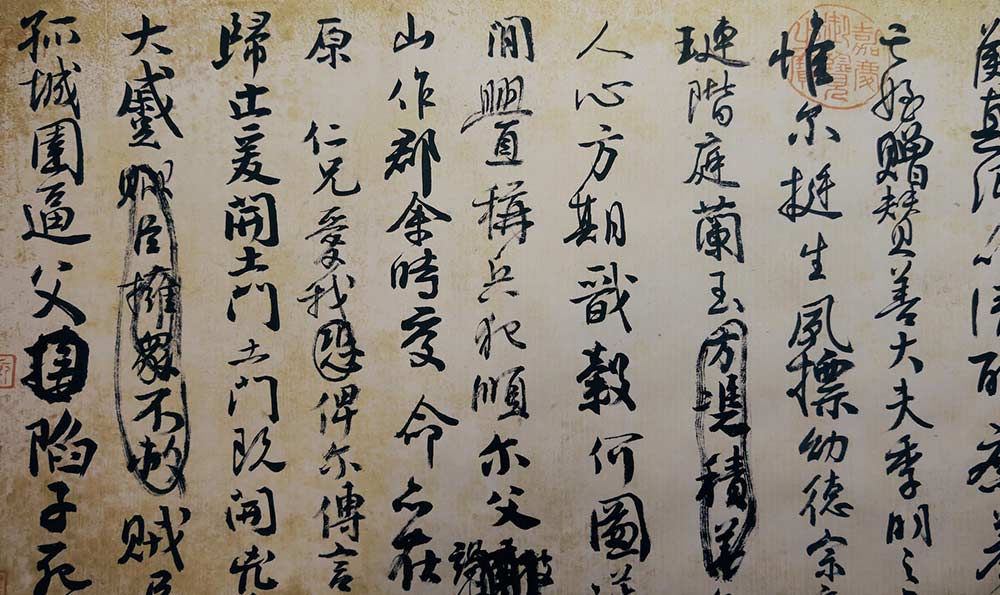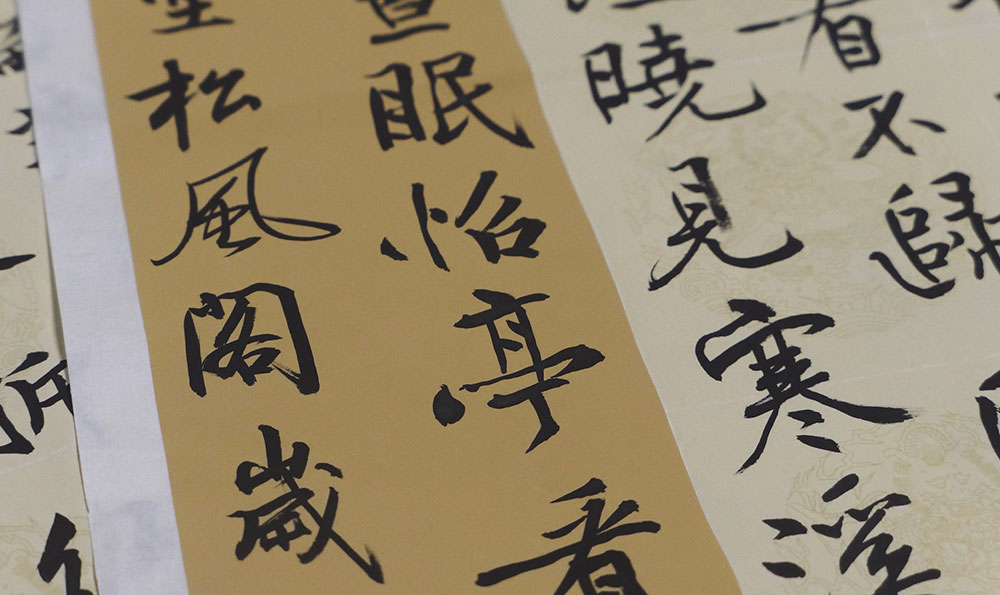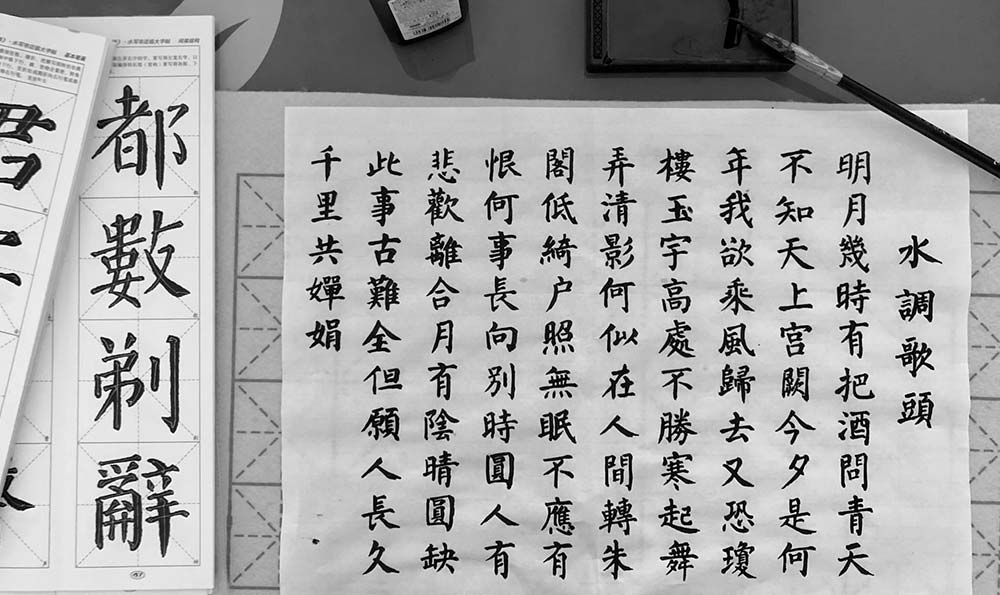特立颂钢笔楷书,作为一种特殊的书写工具和艺术形式,具有独特的历史背景和技术特点。本文将通过定义、分类、举例和比较等方法,系统介绍特立颂钢笔楷书的相关知识。

一、定义
特立颂钢笔楷书,是指使用特立颂钢笔书写的具有楷书特点的字体。楷书作为汉字书法中的一种基本字体,以其清秀、规整的笔画形态而广受推崇。而特立颂钢笔作为一种高质量的书写工具,其独特的笔尖设计和流畅的书写感受使其成为楷书创作的理想之选。
二、分类
特立颂钢笔楷书可以根据字体结构、线条风格和书写技巧进行分类。根据字体结构可分为正楷、行楷、隶书等不同类型;根据线条风格可分为骨法、临摹、点画等不同风格;根据书写技巧可分为教学楷书、行书楷书、工艺楷书等不同用途。不同分类的特立颂钢笔楷书具有各自的特点和应用场景,为书写者提供了更多的选择。
三、举例
以下是几个特立颂钢笔楷书的具体例子:
1.正楷:以《欧阳询碑》为代表,笔画工整、结构稳定,是楷书中最为常见的一种类型。
2.行楷:以《颜真卿九成宫醴泉铭》为代表,线条流畅、行书风格浓厚,常用于草书与楷书的结合。
3.隶书:以《张旭草书对楷书序》为代表,笔画挺拔、线条刚劲,是楷书中最为独特的一种类型。
四、比较
特立颂钢笔楷书相比于其他书写工具的特点在于其更加清晰和规整的字体。与毛笔相比,特立颂钢笔的线条更加细腻,字体更加规整,书写起来更加轻松流畅。与钢尖笔相比,特立颂钢笔的笔尖设计更加精细,书写感受更加舒适,字体也更加自然优美。特立颂钢笔楷书是传统和现代相结合的产物,兼具传统书法的韵味和现代科技的便利性。
通过对特立颂钢笔楷书的定义、分类、举例和比较的介绍,我们可以更加深入地了解这一独特的书写工具和艺术形式。特立颂钢笔楷书不仅是一种书写工具,更是一种传承和创新的结合,让我们在书写的感受到传统和现代的交融之美。
特立颂钢笔楷书如何写
引言

特立颂钢笔楷书是一种独特而受欢迎的书写风格。本文将通过定义、分类、举例和比较等方法,客观、专业、清晰和系统地阐述特立颂钢笔楷书的相关知识。
定义和分类
特立颂钢笔楷书是一种以特立颂钢笔为工具书写的楷书风格。楷书,作为中国传统书法中的一种重要字体,要求书写规范、规整、匀称。特立颂钢笔楷书则以其独特的笔触和独有的工艺,为楷书增添了新的魅力。
特立颂钢笔楷书可以根据笔画和构造形式进行分类。根据笔画,可以分为直笔和曲笔两类。直笔流畅简练,适合书写方正的字体,而曲笔则更擅长书写圆润柔美的字体。根据构造形式,可以分为细笔和粗笔两类。细笔书写出的字体清晰利落,线条细腻,适合书写细致的字体,而粗笔则更适合书写大字和醒目的标题。
举例说明
特立颂钢笔楷书的独特之处可以通过一些实际的例子来说明。在写字的过程中,特立颂钢笔楷书可以通过调整笔触的力度和角度,使得笔画的粗细和透明度得到更好的控制。这样一来,书写出的字体不仅线条流畅,而且有层次感和立体感。
特立颂钢笔楷书的特点还表现在字体的工整和规整上。特立颂钢笔的笔尖经过精细的加工,使得书写过程中的每一笔都能准确地呈现出所需的线条形态。这为书写者提供了更高的书写效率和准确性。
比较阐述
与传统的毛笔楷书相比,特立颂钢笔楷书具有一些明显的优势。特立颂钢笔楷书的笔触更为灵活,能够书写出更多样化的线条表现。特立颂钢笔楷书的笔尖更为稳定,不易出现毛笔常见的晕墨和断笔情况。特立颂钢笔楷书不需要另外准备墨汁等工具,更加方便实用。
结尾
通过定义、分类、举例和比较等方法,我们对特立颂钢笔楷书的写作方式有了更深入的了解。特立颂钢笔楷书以其独特的书写风格和方便实用的特点,深受广大书法爱好者的喜爱。希望本文能为读者提供有关特立颂钢笔楷书的相关知识,并激发他们对书法艺术的兴趣和研究。
特立颂英文版
Innovative Praise: A Comprehensive Overview of "Distinct English Version"

Introduction:
The emergence of the "Distinct English Version" has transformed the industry, providing a unique and innovative approach to the English language. This article aims to provide a comprehensive overview of this phenomenon, exploring its definition, classification, examples, and comparisons.
Definition:
The "Distinct English Version" refers to a specialized form of English that has deviated from traditional norms, incorporating new vocabulary, syntax, and cultural references. It is distinguished by its originality and creativity, catering to a specific target audience.
Classification:
There are various categories within the "Distinct English Version" domain. These include but are not limited to:
1. Slang Variants: This category encompasses localized forms of English that have evolved within specific communities or regions. Examples include African American Vernacular English (AAVE) in the United States and Cockney in London.
2. Jargon and Technical Terms: Industries such as technology, finance, and medicine have developed their own vocabulary and terminologies, creating a unique "Distinct English Version" within these specialized fields.
3. Internet Slang: With the rise of social media and online communication, internet slang has become a prominent category within the "Distinct English Version." Acronyms, abbreviations, and memes are commonly used to convey ideas concisely.
4. Literary and Poetic Styles: Renowned writers and poets often experiment with language, creating their own unique "Distinct English Version." These styles may involve unconventional grammar, wordplay, and metaphorical expressions.
Examples:
The "Distinct English Version" can be observed in various forms across different contexts. For instance:
1. In the music industry, artists like Bob Dylan and Eminem have pushed the boundaries of language, introducing new words, expressions, and narratives in their lyrics.
2. In the world of technology, terms such as "cloud computing," "digital nomad," and "blockchain" have entered mainstream usage, contributing to a specialized "Distinct English Version" within this field.
3. Internet memes and viral videos often rely on unique language and cultural references, fostering a distinct form of communication among online communities.
Comparisons:
While the "Distinct English Version" offers new possibilities and creative expressions, it is essential to acknowledge its potential challenges and limitations. In comparison to standard English, it may face issues related to comprehension, inclusivity, and cultural barriers.
Conclusion:
In conclusion, the "Distinct English Version" encompasses a wide spectrum of linguistic deviations and innovations. From slang variants to technical jargon, this form of language reflects the dynamic and ever-evolving nature of human communication. By understanding and appreciating these unique linguistic phenomena, we can better navigate the diverse world of English-language expressions.






























